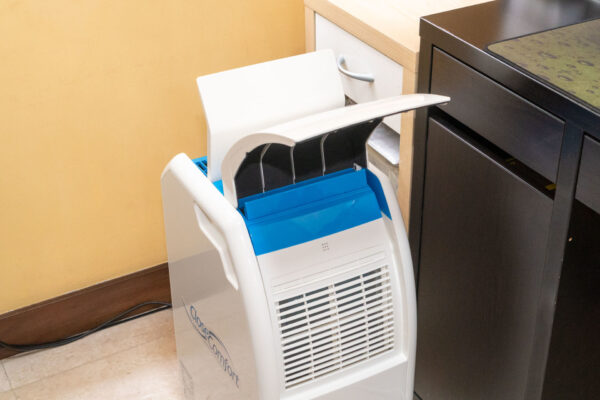
I realise the weather right now isn’t the best time to write about this product, but the Cool Focus portable air conditioner is so cool, it can’t wait. This is something everyone working from home needs to have in the typical hot and humid weather we have in Singapore.
Cool Focus is the product of Close Comfort, an Australian and Singapore based start-up whose mission is to provide affordable and efficient cooling without compromising sustainability. This portable air conditioner is designed to give you personal cooling comfort without incuring high energy costs.
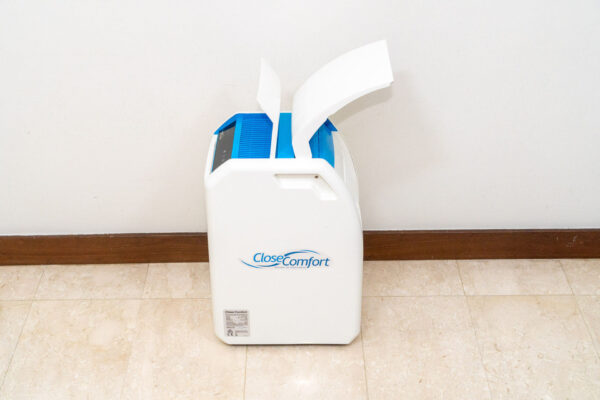
Before you quickly dismiss this idea as being too good to be true, let me just very quickly point out some important highlights of Cool Focus. First, this is a real air conditioner, not simply a cooling, misting, or evaporative fan. Secondly, it focuses on cooling one or two persons in a targeted area. Cool Focus is able to be very energy-efficient by cooling people, not rooms. Apart from being portable, Cool Focus is also convenient to setup and use anywhere.
If you know something about other portable air conditioners, you should understand that Cool Focus is quite different from them, as you’ll find out from below. I’ve now used Cool Focus for about two weeks, and I’m really impressed. There’s just one bit that may bother some people, like me, but I’ll talk about how I deal with it later.
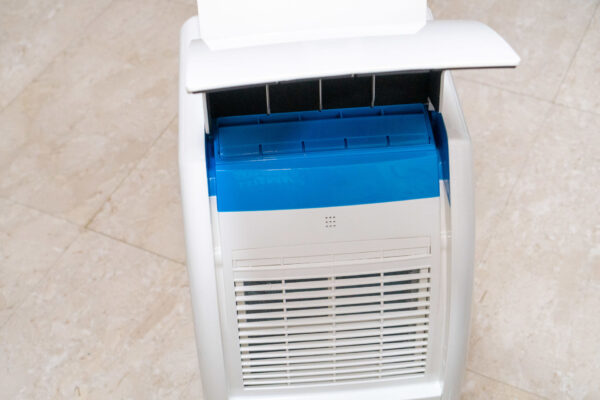
Setting up the Cool Focus is really convenient and easy. Unlike conventional portable air conditioners, Cool Focus doesn’t need exhaust hoses or handling of water. You can simply just take the unit anywhere, plug in the power, turn it on, and pretty instantly start to enjoy cold air.
While conventional portable air conditioners typically require you to close windows and doors to keep the cold air in and the hot air out, Cool Focus works just fine with windows and doors left open. In fact, you are encouraged to keep them open for fresh air to circulate.
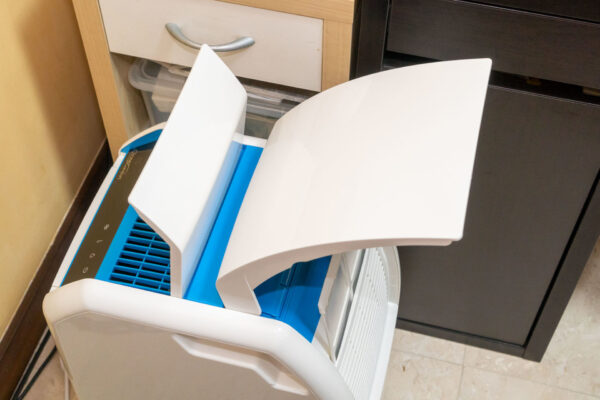
Cool Focus has two air deflectors that help direct cold air to the front, while exhausting the warm air the other way. For best performance, you may want the exhaust air from the back of the Cool Focus to discharge out of a window or door. However, the exhaust air is only just warm, so even if you discharge it within the room, the heat easily dissipates away, especially if you have natural ventilation through the room. This is why leaving windows and doors open is perfectly fine for Cool Focus. The ambient air temperature in the room may be very mildly impacted, in exchange for the significant cooling comfort you get from Cool Focus.
The cold air coming out from Cool Focus is legitimately cold. I don’t have a proper ambient air temperature sensor, so the infrared thermometer will have to do.The air deflector’s surface temperature is 18.7°C. This is within just 10 minutes of starting the Cool Focus!
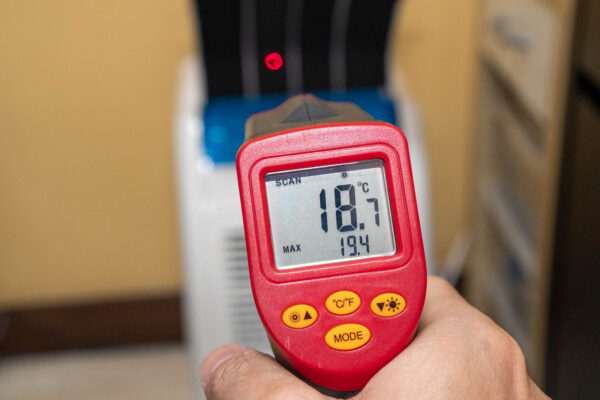
You definitely feel the strong cold air up to 1 metre away. You will feel some distinct “coolness” up to 3 metres away, compared to the ambient air elsewhere in the room.
Depending on your room design and furniture layout, it is quite possible for Cool Focus to bring comfort to three or four people. For exampe, four persons at a mahjong table can enjoy some relief from our hot afternoon weather.
As mentioned earlier, Cool Focus is designed to cool people. So you generally need to sit somewhat in front of the cold air stream. Cool Focus will not cool rooms. So, while you can aim Cool Focus at a sofa in your living room, don’t expect the rest of the living room to get cold.
Energy consumption is impressively low. Close Comfort rates their power consumption at 300 W. I’ve found that when the compressor is running, the power consumption is only about 260 to 280 W.
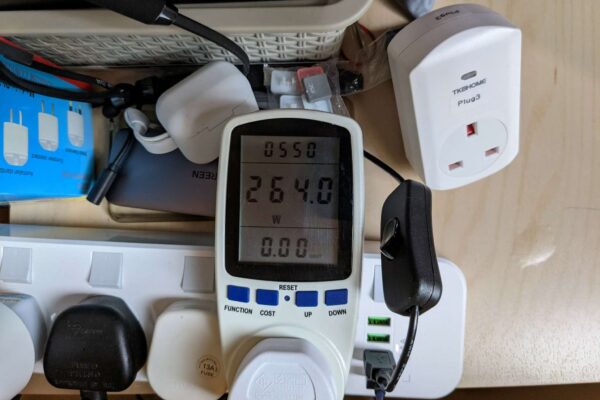
Then, as you know, the compressor doesn’t run all the time. When only the fan is running, Cool Focus draws about 10 W of power. So, what does this mean, realistically, after a few hours of air conditioner usage?
Well, on a relatively hot afternoon, with the Cool Focus set at 24°C, I measured 259 Wh after one hour of use. This compares favourably to Close Comfort’s claim of 300 W power consumption.
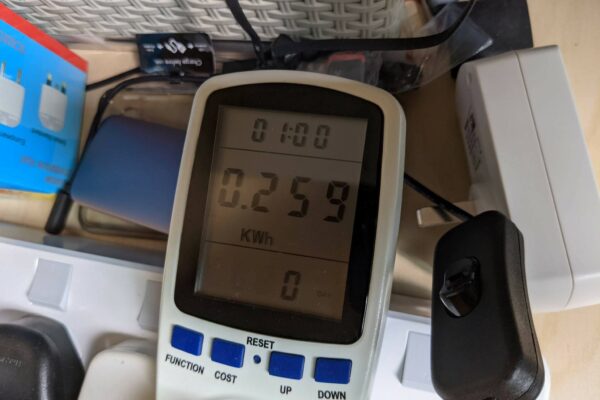
I am impressed. In fact, when one compares with conventional portable air conditioners, this really counts as hyper energy efficient. Close Comfort’s own claim is that Cool Focus uses 75% less power than traditional portable air conditioners. While I don’t have any one on hand to compare, I looked up some specifications on the Internet. A certain E******e brand of portable air conditioner desgined for cooling a 12 m2 space is rated at 1150 W of power consumption. Do the math. I think Close Comfort’s claim is quite legit.
Alright, maybe you’re thinking, cooling one or two persons is not the same as cooling 12 m2 of space. Yes. However, what we really want is for the people to be comfortably cooled, not for the whole room to be cooled, correct?
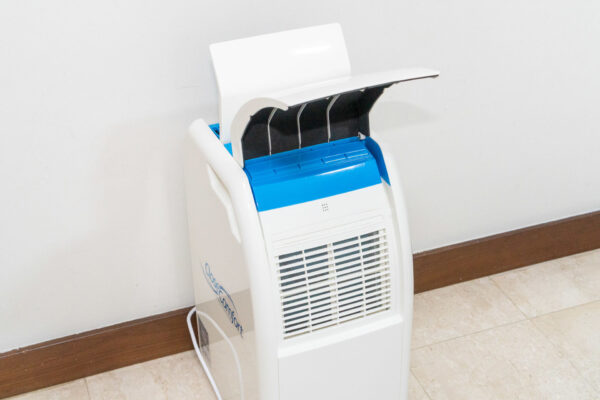
I’m an analytical kind of person. The next thing for me to compare is with proper split-unit air conditioners. Some of the new inverter type compressors are highly efficient. Mine, for example, according to my own estimates from over-the-night electricity consumption, thanks to per-half-hour consumption data available from smart meters, consumes about 700 Wh to cool two bedrooms. But this is at night, and my setpoint is 24°C, so the compressor probably doesn’t do much work. I expect day-time consumption to be much higher. I think Cool Focus’ energy efficiency compares well when you only need to cool one or two persons!
The Cool Focus unit is quite compact, measuring 550 x 273 x 385 mm (HxWxD) when the deflectors are closed. The 17 kg weight may be a little hefty, but fortunately, the caster wheels underneath make it easy to move the unit around. This is really nice, because without the need to deal with exhaust hoses, you will want to move the Cool Focus around to use it more often than not. You can even use the Cool Focus outdoors, like in your garden while you are tending to your plants.
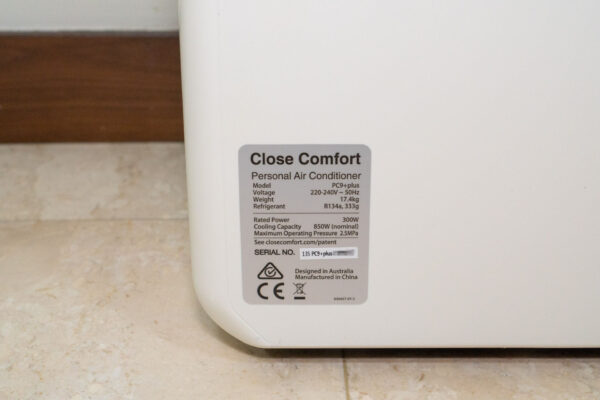
There are no consumables required to run the Cool Focus. It runs on R134a refrigerant, similar to most air conditioners.
There are three filters — front, top, and rear — that Close Comfort recommends you check every two weeks. They are easily removable, and cleaning them is easy.
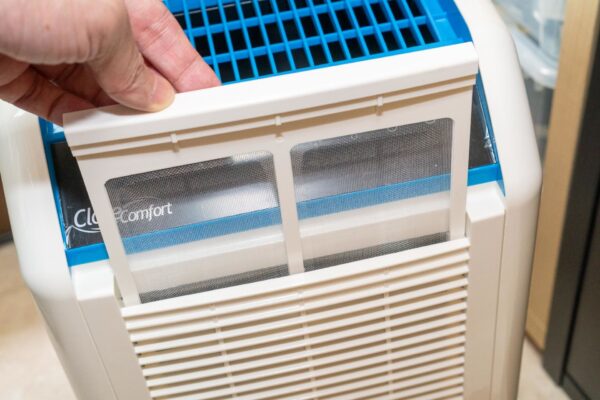
Cool Focus produces some condensate water, not unlike any air conditioner. However, Close Comfort’s innovative design recycles the condensate water to cool the condenser coils. Under normal operation, you can hear the sound of water dripping.
Optionally, there is a rubber bung at the bottom which you can remove, then in which case condensate water will collect in the water tank below. The water tank can hold over 2 litres of water, and also doubles up as storage for the extra long power cord when the unit is not in use.
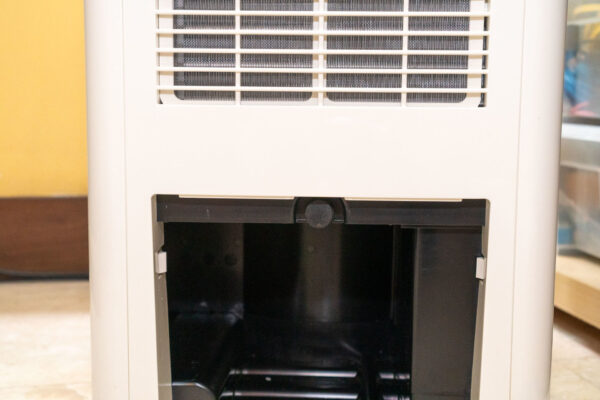
There are no buttons on the Cool Focus unit. Instead, you use a infrared remote to control the temperature setpoint, fan speed, select cooling or fan mode, and turn on or off the unit. You can also start and stop the Cool Focus unit by opening or closing the warm-side air deflector.
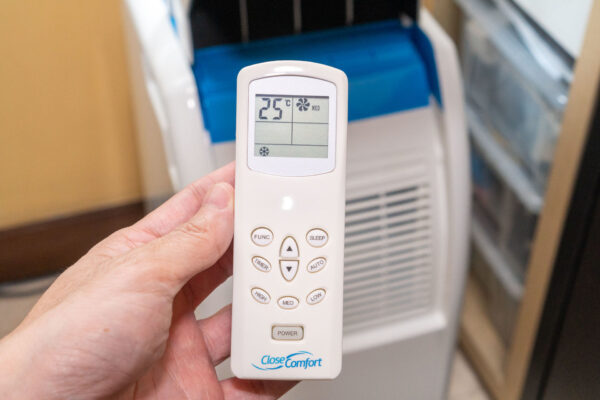
There are several status indicator lights on the back. The power indicator blinks when the compressor isn’t running, such as when Cool Focus has reached the temperature setpoint or it is functioning in fan mode. When the compressor runs, the power indicator is steadily lit. The other indicator lights show various problem conditions.
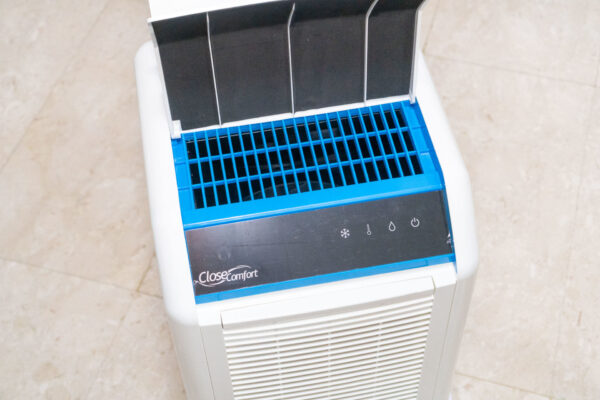
Apart from the infrared remote, Cool Focus also comes with a transparent deflector flap that is used in conjunction with the “focus enhancer”. The focus enhancer is simply the nozzle on the Cool Focus cold air outlet. When closed, air is “squeezed” out at higher speed for a farther throw. When seated at a work desk, the transparent deflector flap helps direct cold air toward your upper body. Otherwise, unless you raise the Cool Focus above the floor, you’ll find that cold air is mostly directed at your mid-body area.
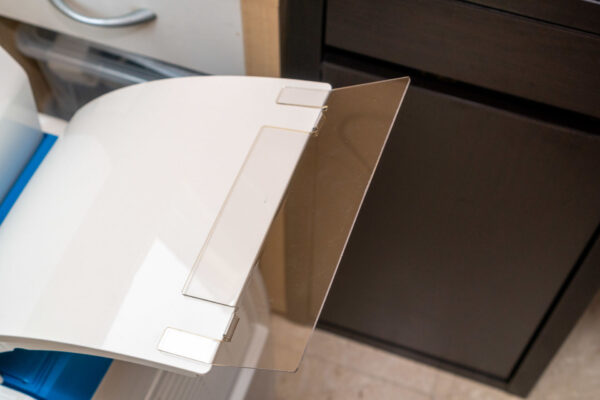
Portable air conditioners are inevitably quite noisy. Both the fan and compressor are, after all, literally packed into the same unit next to you. To this end, Close Comfort seems to have done a reasonably good job keeping the Cool Focus’ noise level in check. The specification lists the noise level at 46 – 54 dB. In my own measurements, my ambient room noise level increaseed from 42 dB to about 52 dB about 1 metre away from the Cool Focus when the unit’s fan speed is set to low.
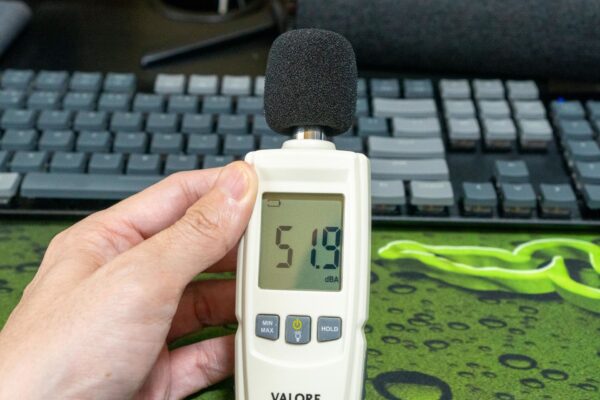
I’m easily bothered by noise. While the noise won’t actually hinder my videoconferencing calls, I prefer to reduce the noise level further. There are two things I do: 1) position the Cool Focus a little further away, and a little behind me; 2) wear headphones, or in-ear monitors, to block out more noise. This seems to help, and it’s a simple solution if you’re bothered as much as I am.
Cool Focus is really fantastic for work-from-home situations. Based on my consumption rate of about 260 Wh per hour, extrapolating out 8 hours a day for a ballpark 22 workdays a month, the whole month energy consumption from Cool Focus amounts to 45.76 kWh. At the 13.83 cents per kWh wholesale electricity rate I get on average, the whole month electricity cost is just $6.33 (inclusive of GST).
For the sake of comparison, I also want to point out that evaporative coolers aren’t that cheap to operate. For a certain E******e brand evaporative cooler’s specifications I looked up, the power consumption is about 200 W. This is only just a little less than Cool Focus’ consumption. An evaporative cooler, however, blows humid air at you. It’ll never be as good as the cool dry air you get from Cool Focus.
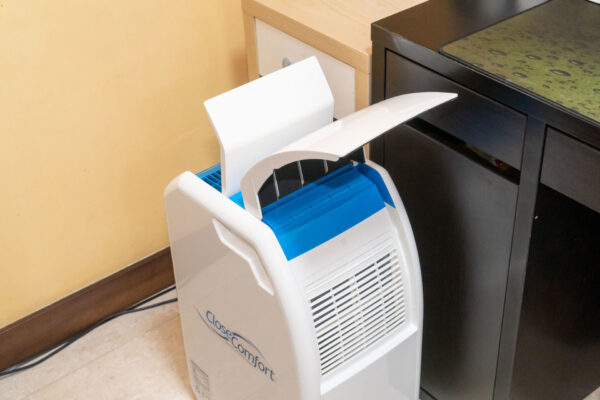
For your work-from-home endeavours, Cool Focus most definitely makes far more sense than conventional portable air conditioners. Even if you have a split-unit air conditioner for your work space, you’ll still save on operating costs by using Cool Focus if you only need to keep yourself cool. Cool Focus is very versatile in where you can use it, so you’ll probably want to use it much more than just work-from-home.
To be clear, Close Comfort didn’t leap-frog cooling technology. Cool Focus isn’t magic. It’s simply a cleverer, more innovative design that focuses cooling energy on what truly matters, the individual person(s), while being very convenient and easy to setup and operate.
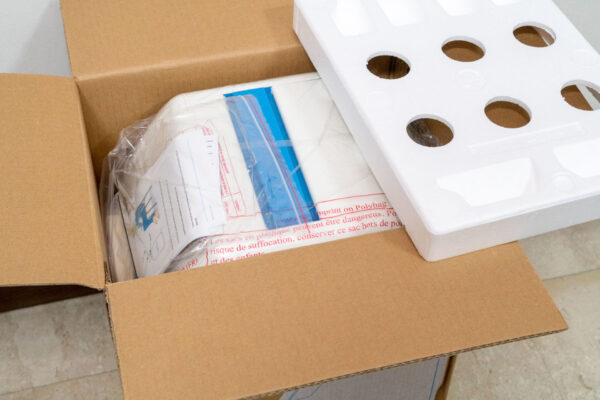
Cool Focus presently retails at $649 with free shipping. Check out Close Comfort’s website for more information and purchase options.
Summary
The Cool Focus portable air conditioner takes an innovative approach to cool people, rather than rooms, achieving significant savings in energy consumption.
Highlights:
- Easy to setup anywhere
- No exhaust hoses, no water handling required
- Can be used with open doors/windows, even outdoors
- Effective cooling for two persons up to 3 metres away
- Impressively low energy consumption
Great review!
Does it only cool you down if the wind is pointed at you? I usually don’t like aircon blowing at me (and easily get sick) so that is my only worry.
I suppose the best effect is when the wind blows at you directly. I understand, I don’t like the split-unit FCU to blow at me directly either. Since Close Comfort is designed to cool person, rather than room, it won’t achieve its purpose if it is pointed away. My suggestion is to position it farther way, or angle so you don’t get the full blast of air, so that at least some of the cool breeze will get to you.
can you measure the temperature of the hot air dispensed out? It is definitely much higher than the said 40-42 degrees.
I bought one unit based on ur review, but it really warmed up my room very quickly, and the hot air is dissipated everywhere, and not only up as claimed.
I have a “cheap” infrared thermometer. If I point it directly into the exhaust, it gets hot, about 48 degrees. But a fair measurement is to perhaps pointing at the deflector that redirects the hot air, and that measures 42.6 degrees max.
Is there sufficient ventilation in your room? I don’t experience the problem of the hot air being trapped. There’s no magic… the hot air certainly has to get somewhere. If your enclosed space is too small, or there’s not enough ventilation, then the hotness certainly will build up.
Thanks for doing up this really well-written review, I’m considering purchasing the Close Comfort because the weather has been crazy hot lately.
I understand that it is just meant to cool one person within a limited area, but if I put a fan right in front of where it blows out cool air, can that in a way “expand” the coverage area of cool air?
It might help mildly. But do bear in mind, there’s no magic happening here. Close Comfort’s rated cooling capacity is 850W, which is equivalent to 2900 Btu/hr. A “standard bedroom” is often fitted with at least a 9000 Btu/hr aircon (12000 Btu/hr for master bedrooms). So you need to manage your expectations. 🙂
There is no magic to this equipment, let’s divide the room into “A” cold side & “B” warm side. The amt of heat remove from “A” is transfer to “B” You can feel the cold air if it is placed near to you but you also hear the noise from the unit.